This change comes fast. It is driven by artificial intelligence and the demands of customers.
Today’s businesses use advanced bots. They seek efficiency and connection with their people.
The need for direct communication fuels the thirst for smart bots. These bots tackle complex questions. They reshape the way businesses talk to their customers.
In examining the changes, five trends emerge that alter the landscape of bot platforms.
First, AI integration is essential. It is no longer optional. Businesses must have it to create smart and meaningful interactions.
Next, omnichannel approaches provide fluid experiences. It doesn’t matter the platform—be it web, mobile, or social media. Customers seek consistency in their journeys.
Another trend is the growing desire for personalization. Consumers want tailored interactions. They expect relevance and care.
Moreover, automation is evolving. Basic query handling is fading, giving way to managing complex processes.
Finally, analytics matter. Businesses lean on data-driven strategies. Integrating analytics in bot frameworks yields insights. These insights are crucial for ongoing progress.
Choosing a bot platform requires attention to key features that enhance effectiveness and user experience.
Important traits include strong natural language processing NLP. Bots must understand human language well for smooth interactions.
Machine learning is essential. It lets bots grow and adapt as they engage with users.
Integration with current systems matters, too. Linking with customer relationship management CRM tools streamlines operations.
Customizability should be prioritized. The bot must reflect the brand, secured by measures to protect user data and meet regulations.
Ultimately, user experience is vital to success.
Intuitive design is crucial. It reduces friction and makes interactions easy.
Simple interfaces, responsive designs, and feedback loops keep users engaged and satisfied.
Ongoing testing reveals user pain points. It drives innovation through real-world insights.
Research shows that enhancing user interface UI and user experience UX leads to higher satisfaction levels. Organizations investing in this will surely gain in customer loyalty and engagement.
Also read: 5 beste gratis projectmanagementtools
Leading Bot Platforms for 2025

As we move into 2025, change is inevitable.
First, the need for better automation grows across industries, igniting demand for superior bot solutions.
Companies increasingly use bots for efficiency and customer connection.
This need for quick, smart interactions shapes how developers craft bot platforms.
Technological progress, especially in machine learning and natural language processing NLP, raises the bar for bot performance.
These advancements enhance user interaction, making it more intuitive.
Thus, firms must keep up with these technologies to deliver user experiences that meet the demand for speed and precision.
Trends Driving Bot Platform Development
-
Increased Adoption of AI: AI integration has become necessary. Companies seek platforms that embed AI seamlessly, enabling smarter, adaptive exchanges.
-
Personalization: Users want interactions that feel personal. Bot platforms now utilize data to customize responses, enhancing user satisfaction.
-
Automation of Complex Processes: Bots now tackle complex workflows, extending their utility beyond simple inquiries into customer service and internal operations.
-
Analytics Integration: Data-driven decision-making is on the rise. Integrating analytics tools in bot frameworks allows businesses to gain insights and adjust strategies accordingly.
Key Features to Look for in Bot Platforms
When assessing bot platforms, key features are vital:
-
NLP Capabilities: Strong NLP capabilities enable bots to grasp human language nuances, leading to smoother conversations.
-
Machine Learning: Learning from interactions improves bot performance. This helps them adapt to user preferences.
-
Integration: Platforms should connect seamlessly with existing services such as CRM systems and social media.
-
Customizability: Companies need the ability to tailor bots to match branding and operational requirements.
-
Security Features: Strong security protocols must protect user data and adhere to regulations.
User Experience: The Importance of Intuitive Design
A solid user experience UX is essential for bot platform adoption.
Intuitive design reduces friction, easing user engagement.
Key elements include:
-
Simplicity: Platforms must be straightforward, enabling even the least tech-savvy to navigate effortlessly.
-
Feedback Mechanisms: Users benefit from feedback during interactions, enhancing the conversational experience.
-
Responsive Design: Responsive design is crucial for diverse devices, ensuring accessibility across desktops, tablets, and phones.
-
User Testing: Ongoing user testing uncovers UX pain points, guiding developers to implement real feedback.
Research indicates that organizations prioritizing UI/UX can see up to a 200% rise in user satisfaction, aligning design with user needs.
Also read: 6 best free graphic design software
The Role of AI in Bot Platforms
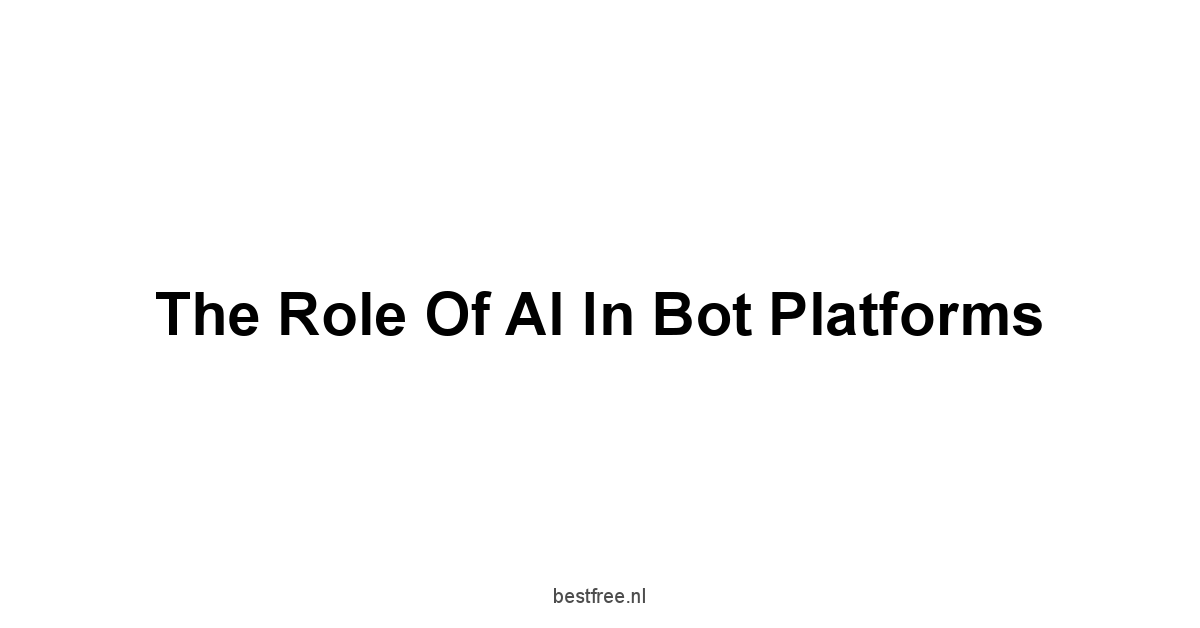
AI drives modern bot platforms. It enhances functionality and user experience.
Natural Language Processing Advancements
NLP technology has changed how bots talk to users.
Modern NLP models use complex algorithms to grasp context, nuance, and intent.
Sentiment analysis, context recognition, and emotion detection are now standard.
-
Semantic Understanding: Bots no longer just recognize keywords; they grasp the meaning behind queries. This yields accurate responses and better interactions.
-
Multilingual Support: NLP frameworks now support many languages, allowing for global reach and engagement.
-
Training on Diverse Datasets: Bots learn from vast datasets, recognizing dialects, slang, and cultural nuances, thus improving user satisfaction.
Machine Learning Integration
Machine learning boosts bot platforms. Bots learn from each interaction and improve.
-
Pattern Recognition: ML algorithms help bots see patterns in behavior, tailoring responses based on past data.
-
Error Correction: Bots learn from their mistakes, adjusting responses to avoid similar errors, refining user experience.
-
Predictive Modeling: By studying past interactions, bots can foresee user needs, offering proactive assistance to enhance engagement and satisfaction.
Also read: 10 beste gratis muziekdownloaders
Business Applications of Bot Platforms
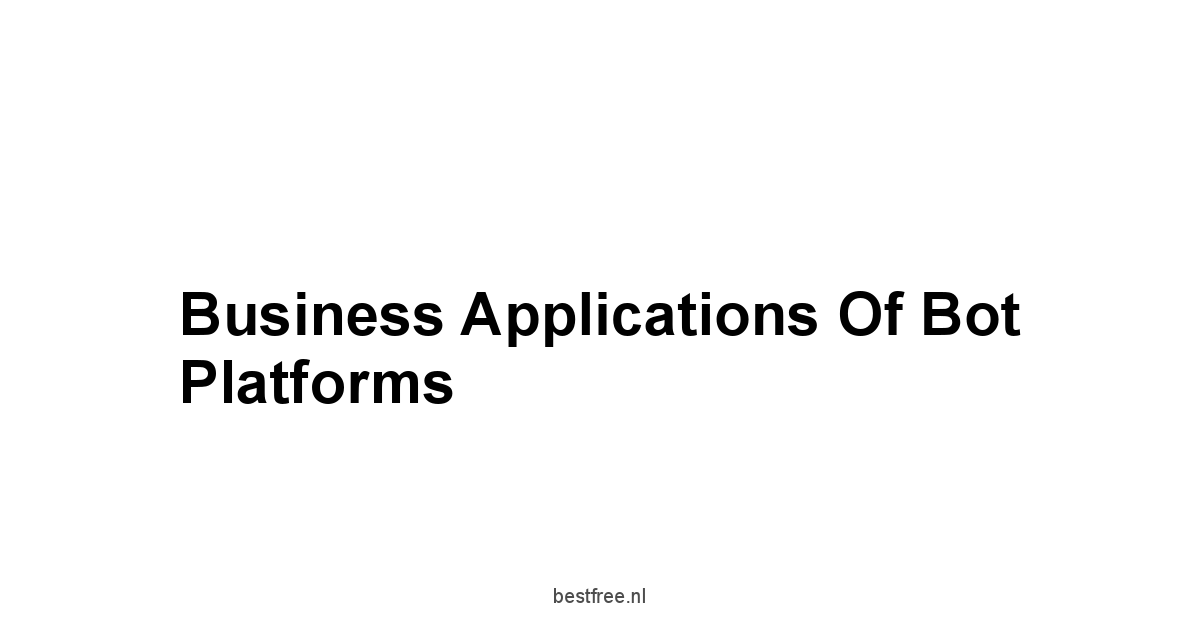
Bot platforms are versatile. They serve many business applications. They streamline operations and improve customer interaction.
Customer Service Automation
Many businesses use bots. They automate customer service tasks. This leads to efficiency and better customer satisfaction.
Key benefits include:
-
24/7 Availability: Bots work all day and night. They provide immediate answers to customer inquiries. This boosts user satisfaction.
-
Cost Efficiency: Automating repeated queries cuts the need for large customer service teams. This leads to savings.
-
Scalability: Bots handle many inquiries easily. This allows businesses to expand support without extra costs.
-
Enhanced Data Collection: Bots gather interaction data. They provide insights into customer needs, preferences, and areas to improve.
Streamlining Internal Processes
Bots also streamline internal processes:
-
Task Automation: Bots automate dull tasks. Scheduling meetings, updating records, sending reminders. Employees focus on complex work.
-
Knowledge Management: Internal bots help employees find needed information quickly. This reduces downtime and boosts productivity.
-
Training and Onboarding: Bots onboard new employees. They provide information, resources, and answer questions. This eases their workplace transition.
Statistical data shows organizations using internal chatbots for automation get a 20-30% increase in employee productivity.
Also read: 5 realistic tips to build a successful startup
Scalability and Performance

As businesses expand, their bot platforms must scale, preserving standards of performance.
Metrics for Measuring Bot Performance
Businesses must track key performance metrics to measure the effectiveness of their bot platforms:
-
Response Time: The speed at which a bot replies to user questions is vital. Quicker replies lead to greater user satisfaction.
-
Completion Rate: This metric shows how often users meet their goals while engaging with the bot, reflecting its effectiveness.
-
User Retention Rate: A steady user base signifies the bot’s quality, suggesting users see value in its services.
-
Escalation Rate: Observing how frequently users are referred to human agents reveals the bot’s limitations and improvement areas.
Handling High Volumes of Interactions
A successful bot platform manages rising traffic without sacrificing service quality.
Key strategies for maintaining performance include:
-
Load Balancing: Spreading incoming requests across multiple servers avoids a single point of congestion, ensuring smoother interactions.
-
Caching: Using caching can shorten response times for common queries, enhancing the user experience.
-
AI-Enhanced Adaptability: Employing AI that learns from traffic patterns helps foresee volume spikes and adjust resources as needed.
Also read: 7 best free screen capture software
Security and Privacy Considerations
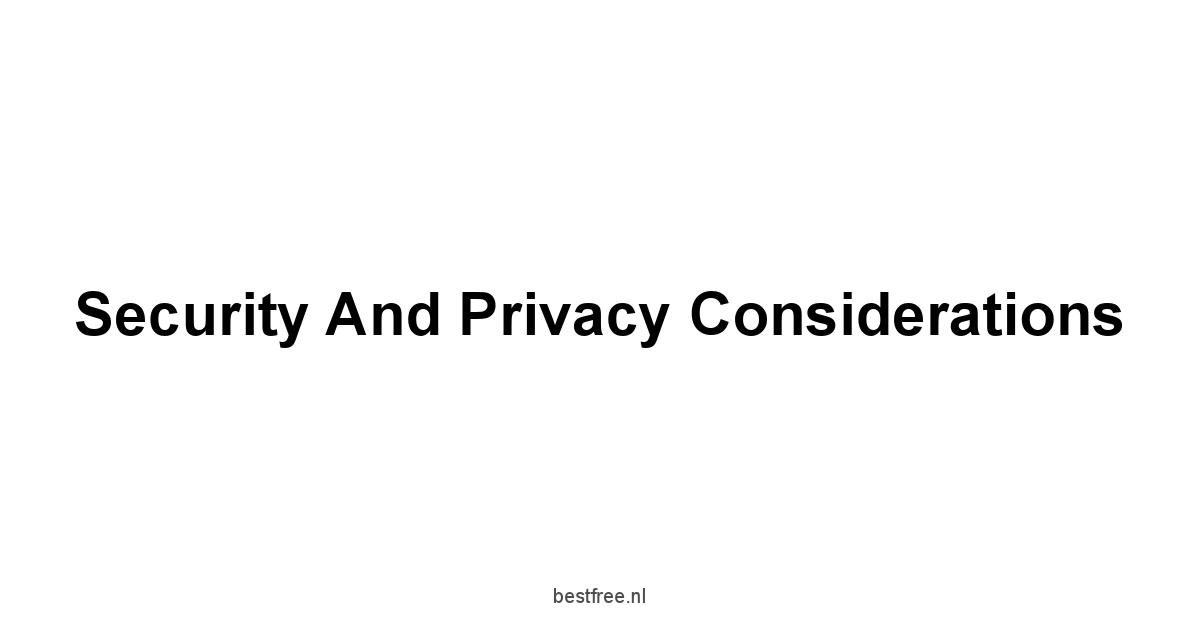
In a time when data breaches occur often, safeguarding user data is critical for organizations using bot platforms.
Best Practices for Data Protection
-
Data Encryption: Encrypt data during transit and at rest. This guards sensitive information from unauthorized access.
-
Regular Security Audits: Regular audits reveal vulnerabilities in the bot platform. Organizations must act quickly to fix them.
-
User Authentication: Use multi-factor authentication for sensitive interactions. It adds necessary security.
-
Privacy Policies: Be clear about data collection and use. This builds user trust and meets regulatory demands.
Compliance with Regulations
Various global laws, like GDPR and CCPA, dictate data privacy practices.
-
GDPR: Organizations must collect data legally. Users should consent and can request deletion of their information.
-
CCPA: This law grants California residents rights over their personal information and affects broader data practices.
-
Regular Training: Train staff on compliance regularly. This raises awareness and ensures actions follow relevant laws.
Also read: 6 beste gratis e mailmarketingsoftware
Future Innovations in Bot Platforms
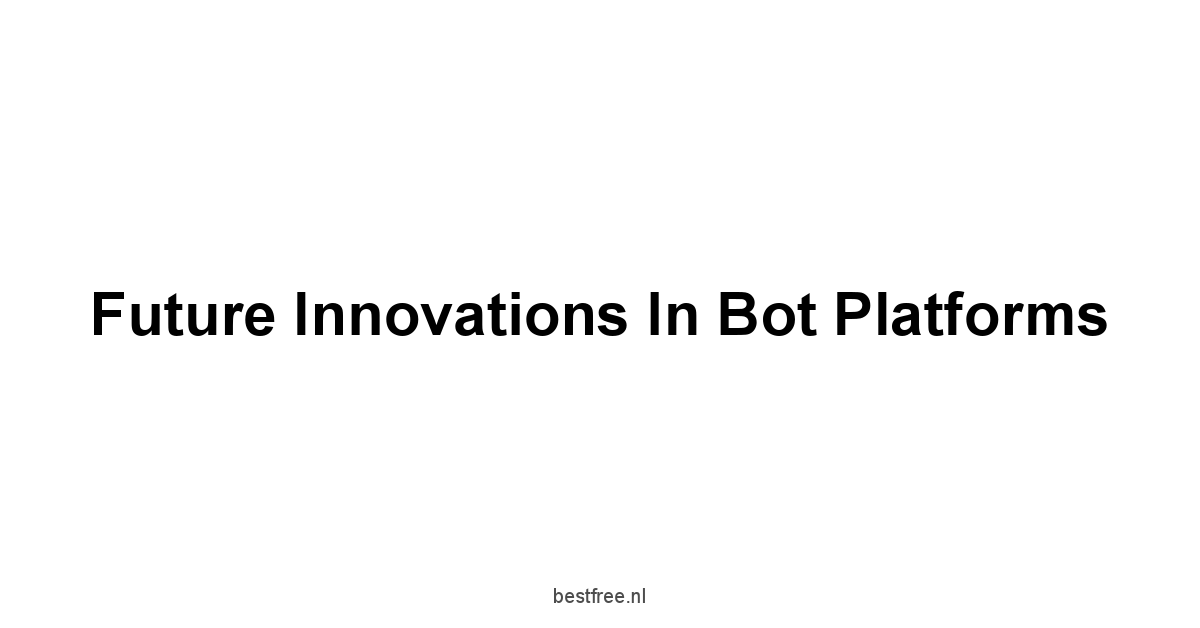
As we approach 2025 and beyond, new technologies carve the path ahead for bot platforms.
The Impact of Quantum Computing
Quantum computers can handle vast datasets and intricate calculations. They can:
-
Enhance Predictive Analytics: With speed, bots deliver sharper predictions about how users act.
-
Improve Natural Language Processing: Better computations yield clearer understanding and lifelike text, refining bot conversations.
-
Solve Complex Problems: Businesses will harness bots to tackle tough issues in finance, healthcare, and beyond, swiftly and accurately.
Enhancements in Voice-Activated Technology
Voice-activated technology grows more vital for bot platforms.
Better voice recognition and synthesis bring fresh possibilities:
-
Conversational Interfaces: Bots will learn to understand voice commands, allowing true conversational agents to flourish across devices.
-
Accessibility Features: Voice-activated bots will open doors, providing valuable interactions for those with disabilities.
-
Natural Conversations: Progress in voice tech moves bots closer to human dialogue, heightening engagement quality.
Recent studies indicate that 55% of users favor voice-activated bots for their ease and speed.
Also read: 7 beste gratis bestandcompressiesoftware
Popular Bot Platforms to Watch

The market shifts. Several bot platforms stand out. They offer innovation and strong performance.
Overview of Market Leaders
-
ChatGPT by OpenAI: It mimics human interaction. ChatGPT is good at generating content and solving problems.
-
Google Dialogflow: A complete tool for launching bots on many channels. Dialogflow merges flexibility with strong natural language skills.
-
Kore.ai: This platform caters to enterprises. It prioritizes security and customization, focusing on business needs.
-
Microsoft Bot Framework: With its services and AI, it holds a strong position. Many organizations lean on Microsoft’s ecosystem.
New Entrants to the Bot Platform Space
Fresh startups arrive. They bring new ideas and solutions.
-
Gleen AI: A newcomer. It helps businesses create custom support bots, easy to use yet highly customizable.
-
Claude by Anthropic: Made for conversations that feel natural. Claude presents a viable option against existing platforms.
-
Gemini from Google: A fierce competitor. Gemini focuses on real-time data, aiming for accuracy in conversational exchanges.
The bot platform landscape grows. New solutions will rise, enhancing user efficiency and simplifying interactions across sectors.
Also read: 5 best free seo tools
Final Verdict
The rise of automation and simple interfaces has changed the view of bots. They are now partners in improving efficiency and customer satisfaction.
Studies show that businesses can achieve up to a 200% increase in user satisfaction by focusing on UI/UX improvements.
This highlights the need for excellence in bot design, allowing firms to lead in a competitive arena.
Looking back at driving trends, personalization and omnichannel access are vital for successful bot interactions.
Users expect customized experiences, and businesses must use data wisely for meaningful engagement.
A strong omnichannel strategy is crucial, as consumers now engage through many platforms—social media, websites, mobile apps.
They want smooth transitions across these channels. This is why a unified strategy is essential in bot development and deployment.
Companies that adopt these methods can greatly improve user engagement, making customers feel valued and understood.
The future of bot platforms goes beyond answering questions. It lies in predicting user needs through predictive analytics and machine learning.
Research shows that firms using AI-driven analytics see greater user engagement and retention. It is essential for businesses to fully embrace these advancements.
As bots learn from previous interactions, they improve, creating a more engaging experience.
With quantum computing and voice technology on the rise, the potential for greater functionality and interaction is boundless.
We will see bots that converse and grasp context, tone, and emotion, creating dialogues that are nearly human.
Organizations that are prepared to embrace these changes will thrive, meeting the demands of a future that prizes efficiency, understanding, and a human touch.
Investing in cutting-edge bot platforms now will surely yield benefits as they become the core of customer interaction and operational success in the years ahead.
Also read: 6 best free data backup software
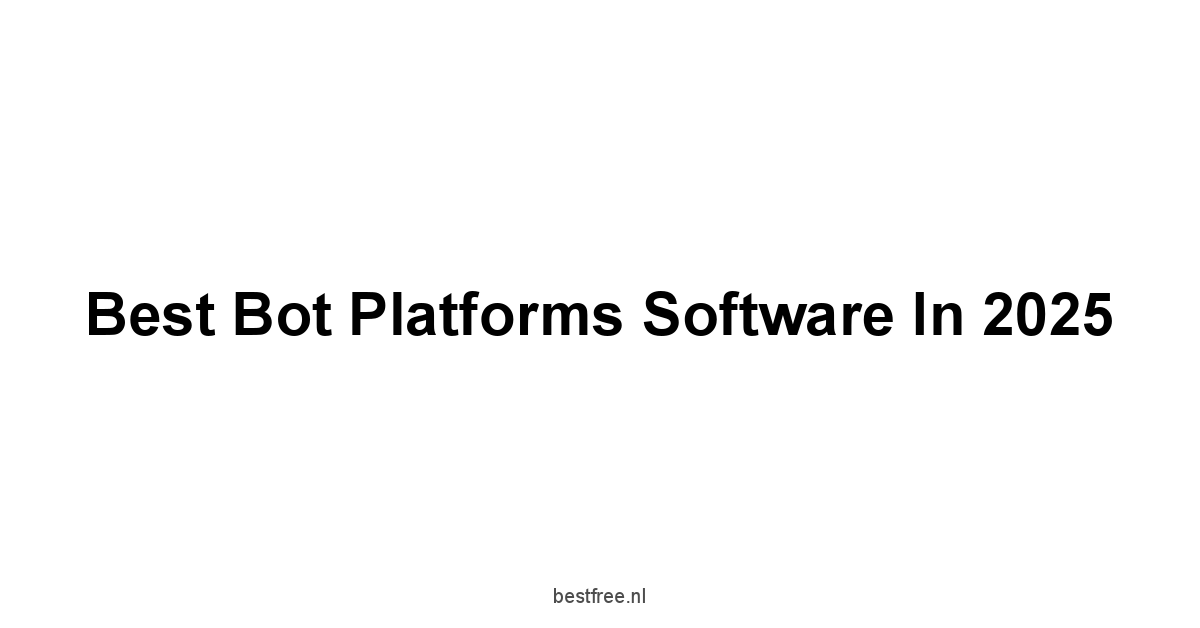




Leave a Reply